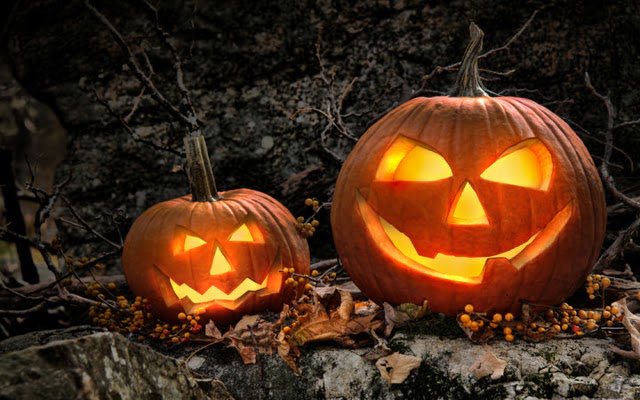
As Halloween gets closer each year, you will start to see carved pumpkins — commonly known as “jack-o’-lanterns” — placed on front porches all over America. When it gets dark, you will notice that many of them are illuminated from the inside by candles, giving them a creepy glow that signals Halloween is just around the corner.
While millions of Americans carve pumpkins every fall, not many know the origins of this tradition. It turns out that we can thank an Irish legend about a man named Jack.
According to the old Irish tale, “Stingy Jack” was a miserable old man who loved playing tricks on everyone, including the devil himself. One day, Stingy Jack tricked the devil into climbing up an apple tree.
He then placed crosses around the tree to prevent the devil from coming down. Stingy Jack did not remove the crosses and let the devil down until the devil promised that he wouldn’t take Stingy Jack’s soul when he died.
Years later, Stingy Jack died. Since he had been so cruel to people throughout his life, Saint Peter refused to let him into heaven. Stingy Jack visited the devil in hell, but the devil kept his promise and refused to take his soul.
Scared to wander alone in the darkness between heaven and hell, the devil gave Stingy Jack an ember from the flames of hell to help him find his way. Stingy Jack had a fondness for turnips and always carried one with him in case he got hungry.
He hollowed out a turnip and placed the ember inside, creating a lantern. From then on, Jack wandered the Earth without a final resting place, using his homemade lantern to light his way. He became known as “Jack of the Lantern” or “jack-o’-lantern” for short.
On Halloween, the Irish would hollow out turnips, rutabagas, gourds, and beets. They would place candles inside them to ward off evil spirits and keep Stingy Jack away.
When Irish immigrants arrived in America, they brought the tradition of jack-o’-lanterns with them, but they soon discovered that pumpkins were larger and easier to carve.
Although the Irish legend of Stingy Jack is widely known, some people believe that the term jack-o’-lantern was initially used to describe the eerie, flickering lights that are sometimes seen at night over bogs, swamps, and marshes.
These lights are also known by various other names, including “will-o’-the-wisp,” ignis fatuus, “hinkypunk,” “ghost-light,” “fairy light,” “hobby lantern,” and “corpse candle.” The faint, flickering lights inside carved pumpkins resemble these mysterious marsh lights.
Interestingly, some scientists theorize that these strange marsh lights are caused by small fires that ignite when organic material in bogs, swamps, and marshes decomposes, releasing methane and phosphine that spontaneously ignite upon contact with oxygen in the air.
Other scientists propose that these peculiar marsh lights may be explained by bioluminescent plants, such as honey fungus, or even the white feathers of barn owls that fly around at night.
Try It Out
Do you enjoy jack-o’-lanterns? Who doesn’t, right? Make sure to try out the following fun activities with a friend or family member:
- Are you ready to create your own pumpkin carving design at home? Are you looking for a scary pumpkin or a happy pumpkin? Maybe you want to turn a pumpkin into a unique art piece… it’s up to you! Take a look at these online pumpkin carving templates. You can choose one of these designs for your pumpkin, or use them as a starting point and customize them to fit your vision.
- Once you have your design ready, ask an adult for help to carve it into a pumpkin and create your very own homemade jack-o’-lantern! Remember: never try to carve a pumpkin by yourself, always ask an adult for assistance.
- If you need some inspiration, check out these creative jack-o’-lanterns. Can you create something as artistic as these? How long do you think it took people to make them? Share your favorite designs with a friend or family member.
Sources of Wonder
- http://pumpkinnook.com/facts/jack.htm
- http://www.history.com/topics/jack-olantern-history
- http://en.wikipedia.org/wiki/Jack-o’-lantern





Leave a Reply